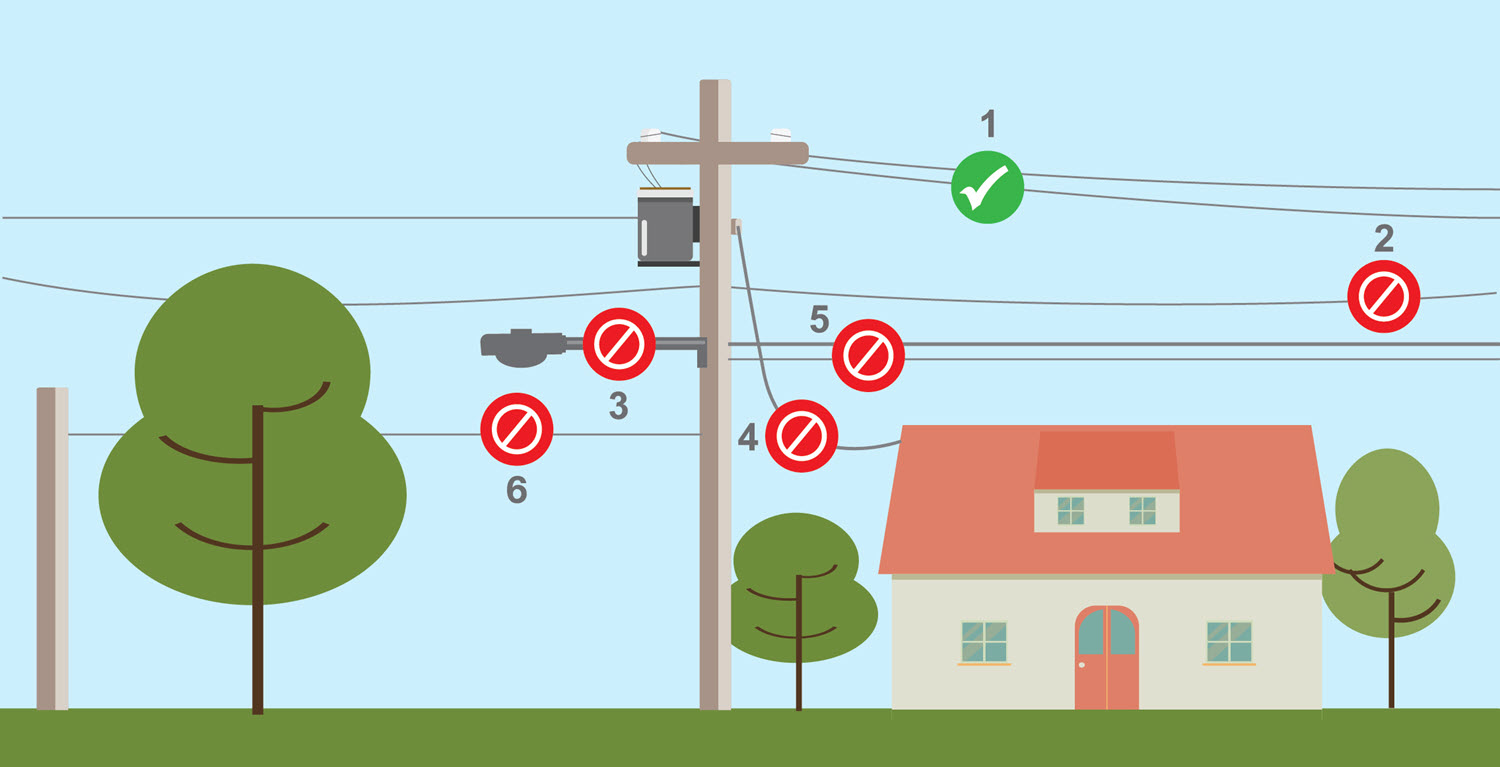If you're experiencing an emergency, such as a downed power line, call us at 1-800-ALLIANT (800-255-4268).
For non-emergency tree situations (such as concern about trees or vegetation near power lines on your property):
- Check the affected line. Refer to the graphic below to determine if the type of line is your responsibility to trim or ours.
- If the responsibility is yours, we’ll gladly drop current to service lines at no charge so you or a contractor can trim safely. Call us at 1-800-ALLIANT (800-255-4268) at least one business day in advance. You may also need to contact your cable or phone company.
- If the responsibility is ours, submit a tree trimming request online. If an imminent threat to Alliant Energy power lines exist, we prioritize and schedule the work based on the severity of the situation.
- We only pick up debris from routine tree trimming. We do not collect debris when a customer requests the service or after emergency or storm-related trimming.
(Click to expand the image.)
Line 1: High-voltage power lines
For safety and reliability, we are responsible for trimming trees around high-voltage lines on a primary service line, the line that goes from pole to pole. Please submit a request and we will prioritize and schedule the work based on the severity of the situation.
If a tree has fallen onto a high-voltage line, this could be a safety emergency. Call us at 1-800-ALLIANT (800-255-4268).
Lines 2-6: Low-voltage, outdoor lights, neutral, service and communications lines
We do not trim trees around low-voltage, outdoor lights, neutral, service or communication lines. However, we can and will drop current to an electrical line at no cost so you or a contractor can safely trim trees.
- Neutral lines (2) - This is a power line that provides a return path for electric current. Trees and vegetation impacting these lines are addressed only during routine vegetation maintenance. You should not submit a request to trim around these lines.
- Outdoor lights (3) - We do not prune around outdoor lights. You may request a service line drop by calling 1-800-ALLIANT (800-255-4268) if you wish to trim around a light.
- Service lines (4) - Property owners are responsible to keep vegetation cleared around low-voltage lines. To request a service line drop, please contact us at 1-800-ALLIANT (800-255-4268).
- Communication lines (5) - Contact your local cable or telephone company for a service line drop.
- Low-voltage lines (6) - Property owners are responsible to keep vegetation cleared around low-voltage lines. To request a service line drop, please contact us at 1-800-ALLIANT (800-255-4268).
Please stay safe when you trim around lines. Check out these safety tips.





